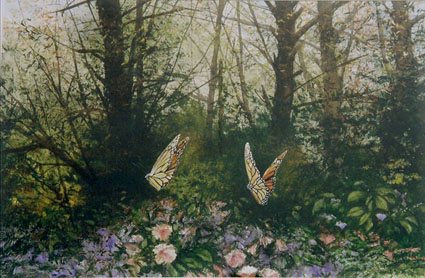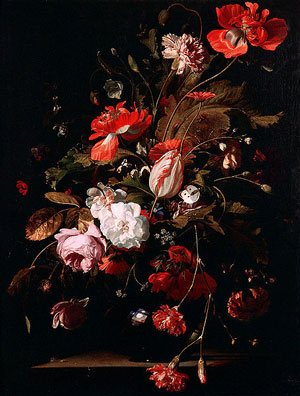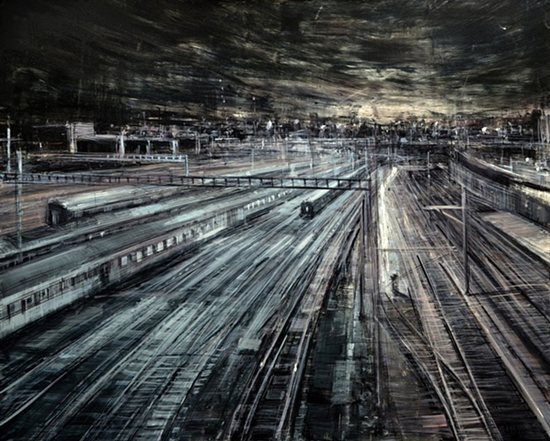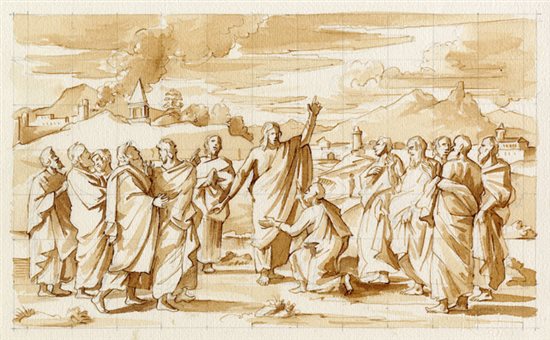All About Still Life

Still Life Painting

The still life painting genre is as diverse as its history is long. From the times of the Egyptians when paintings of food and valuables were depicted on tomb walls to the floor mosaics and wall paintings of Pompeii to High Renaissance works of art to contemporary still life painting of today, the genre has always been one that artists turn to again and again.
Objects that still life painters gravitate toward are also as varied, from items of the natural world to those crafted by human hands. Through them, still life art compositions articulate ideas about luxury and excess, religious symbolism, personal as well as allegorical explorations, and universal human reflections on life and death.
The still life fine art practice is one that artists have committed to over the centuries because the essentials of art can all be explored including color, form, composition, and light. Artists can look to this unique genre for the answers that painters are forever trying to find.
Get your free eBook of still life painting techniques! FREE and exclusive to Artist Daily eNewsletter subscribers. Enter your email in the box below to receive your free eBook plus eNewsletters on still life painting tips and more!
[fw-capture-inline campaign=”RCLP-confirmation-still-life-painting” thanks=”Thanks for downloading!” interest=”Art” offer=”/wp-content/uploads/pdfs/StillLifeUpdate.pdf”]
Still Life Oil Painting Demo
Ismael Checo uses rich color to create an exotic and intense experience of the world. Here, we present an online exclusive still-life painting demo as an example of his oil painting technique.
Checo’s Materials
Palette
Oil paints from various manufacturers including Holbein, Winsor & Newton, and Gamblin
Brushes
Bristle and sable brushes from various manufacturers
Support
Mostly lead-primed linen and occasionally a panel made of MDF board primed with acrylic gesso from Liquitex
Medium
A mixture of stand oil and gum turpentine
Varnish
As a final varnish, Rembrandt synthetic varnish from Talens
 |
Step 1 The artist begins by drawing with a wash made of ultramarine blue, burnt sienna, and flake white. The shadows are washed in to create a simple grisaille rendering of the subject massed into the simplest and clearest shapes. |
||
 |
Step 2 Using a bristle brush, the artist applies color in broad strokes to establish the major relationships in the composition. |
||
 |
Step 3 Working slowly and paying great attention to the color impression at each point in the image, the artist makes simple, clear statements mixing and placing one color at a time. The artist is inclined to exaggerate the saturation of the color slightly with the understanding that he will be able to go back later and add gray if needed. Although the artist does some blending and scumbling with the brush, he is careful not to overwork the image. |
||
 |
Step 4 In some cases, the artist will change to a sable brush toward the end of the painting to achieve a more delicate and more highly rendered finished work.The Completed Painting: Still-life Demonstration2003, 10 x 15½. Collection the artist. |
Setting the Still Life Art Standard

Dutch still life painting set the standard for out-of-this-world virtuosity in the 17th century, and I’ll never get over the unusual mix of objects these artists chose to depict: food of all kinds, polished silverware and gleaming glass, embroidered and heavily worked tablecloths, and tons and tons of flowers.
What I sometimes forget was how symbolic all of these objects were to the audience that had the occasion to view them all those years ago. And it’s also interesting to note that artists often purposefully chose to depict items that might be a challenge to paint as a way to display their painting skills.
All of this symbolism and desire to show off resulted in a lot of paintings that look over the top and a bit unreal. Take floral still life painting for example. Painting flowers was a popular focus during the golden age of Dutch painting. Symbolically, artists and viewers were interested in the nature of a flower’s existence—from freshly cut and blooming to wilting and dying—because of the implied “moral” lesson behind the work, namely that life is fleeting and death, a certainty.
But fresh flowers in a painting were also a sign of supreme luxury. During the 17th century, having a bouquet of flowers was virtually unheard of in even the wealthiest households. In fact, in most Dutch homes flowers weren’t displayed in the way we are used to at all. Instead blooms were displayed one by one in small vases or tulip-holders designed specifically to hold relatively few flowers.
Get your free eBook of still life painting techniques! FREE and exclusive to Artist Daily eNewsletter subscribers. Enter your email in the box below to receive your free eBook plus eNewsletters on still life painting tips and more!
[fw-capture-inline campaign=”RCLP-confirmation-still-life-painting” thanks=”Thanks for downloading!” interest=”Art” offer=”/wp-content/uploads/pdfs/StillLifeUpdate.pdf”]
By creating this kind of ostentatious floral painting that depicted incredible bouquets most viewers couldn’t ever hope to actually see in person or have in their homes, artists were accomplishing two things: One, pointing out the artifice of such displays as a reminder that life is not all about luxury and putting store in such things is a waste. But they were also subverting that very message—by displaying such beautiful bouquets in the first place they were sorely tempting viewers to buy the painting, essentially conveying the idea that you can’t have such luxuries in real life, but this painting will give them to you and the flowers in this painting will never die.
For us to pay the tradition of Dutch painting forward and to be part of this engaging and fascinating stii life genre means really understanding the motivation for the art and the technical execution that it took to get to those amazing final works and working to toward the painting foundation we need to have our own artistic golden ages.
Focal Points When Painting Still Lifes

Deciding where to place the elements in a painting can be difficult, but the decisions are crucial to creating a successful still life. When a composition is done well, it may go unnoticed; however, a poorly composed piece instantly strikes the viewer’s eye as awkward. The goal of a still life composition is to direct the viewer’s eye through a painting and lead them toward what the artist thinks is important. Although there is no single right way to do this, there are specific devices one can employ in order to draw a viewer’s eye to a point of interest, as well as to create the illusion of objects existing in tangible space.
Many beginning painters tend to devote their energy to drawing and painting objects accurately, and find it difficult to create a strong composition. “It’s easy to become overwhelmed by all the possibilities,” says artist-instructor James Sulkowski, who teaches plein air workshops to help students overcome the fear of decision-making. Some artist-instructors suggest using a viewfinder, which many artists employ when faced with a large scene. One can purchase a viewfinder at any art supply store, or make a simple one out of cardboard. Regardless of the material, it serves the same purpose: a viewfinder allows an artist to isolate the key elements of a scene, as well as view multiple compositions before committing one to paper.
When faced with a large scene, it is helpful to ask several questions. Why do I want to paint this scene? What initially attracted me to it? What content is needed to attract the viewer and make them feel what I feel? As these questions are answered, it becomes clear that a given scene is not set in stone. An artist can alter the scene to suit the emotions or message he or she seeks to share with the viewer. A still life portrait is meant to spark the imagination and excite the senses; it should be an image that is begging to be painted or drawn. If a certain area or image is not appealing, change locations or choose alternate subjects. Or, one could crop a scene tightly and focus on minute details that often go unnoticed in a large scene.
Sulkowski recommends that students determine the focal point before applying the brush to the canvas. “No matter what the circumstances, an artist needs to identify the focal point of his or her painting and then structure the painting process so that the viewer immediately understands the center of interest. When painting en plein air, it is very important to keep that focus in mind so time and energy aren’t wasted on elaborating areas of the canvas that are of secondary importance.” The same also holds true when painting a still life.
Nashville artist-instructor Gayle Levée has her workshop students spend hours arranging elements to create the best composition. She advises that they initially put together more objects than they think they’ll need in their still life artwork, and then choose one as the focal point. “Place that object first, and then place the supporting pieces around it,” she suggests. When painting a still life, Levée begins with the focal point, and makes measurements on the canvas proportional to the center of interest.
In her painting Reflections in Gold, Levée employs the rule of thirds to draw the viewer’s eye to the vase and fruit (view a demonstration of the piece). This is one of several devices that can draw the viewer’s eye to a center of interest. This rule, employed in painting and photography, is meant to yield a more aesthetically pleasing composition. It advises that artists divide a canvas into three sections both horizontally and vertically, and place the center of interest at a point of intersection, or in the upper or lower third of the frame. By doing so, the focal point is taken out of the “dead center” of the canvas, and the viewer’s eye is led across the entire space. Once a focal point is established, determining the emotions or message it evokes will help one decide which of the aforementioned tools will most effectively tell a clear and evocative visual story.
True Stillness in a Still Life

Sarah Siltala primarily paints still lifes and landscapes, although she occasionally draws figures in charcoal to hone her drawing skills. “I am inspired by nature and its bountiful gifts, whether a fruit, a flower, a cloud, a tree, or a bird,” she says. “Seeing beauty everywhere inspires me to paint.” This is not surprising given that the artist grew up surrounded by the picturesque landscape of New Mexico, which has attracted plein air artists from around the world for decades. Sometimes inspiration strikes her instantly, and other times she has to ruminate on a subject before she is moved to paint it.
Siltala often turns to her sketchbook in which she keeps various drawings, ideas, and images that inspire her as she prepares to paint. She spends a considerable amount of time determining the composition of her still life paintings, seeking to create a sense of calm and peacefulness in her work. “I’m not attracted to busy compositions,” she says. “Instead I concentrate on one or two main ideas. When setting up my still lifes I rearrange and usually delete objects so that I am sure to catch the optimum light and shadow in the final painting.” When she is satisfied with her still life arrangement, she takes several photos of her final setup for reference in the studio. She often works on more than one painting at a time, making it infeasible to have every still life set up throughout the painting process.
After cutting and sizing her wood panel, she applies gesso and then sketches her composition in charcoal. She begins painting with light washes, slowly building up color. If you were to watch a still life demo from Siltala, you would see her working in the style of the Old Masters, building layer after layer of transparent glazes. She cites Corot, Rembrandt, and Inness as her inspirations. Regardless of the size of her surface, Siltala’s pieces take weeks to complete, because each layer must fully dry before the next can be applied-even though she uses an alkyd medium to speed up the drying process.
“I often play with each layer as I lay it down, pressing sponges, crumpled fabric, or plastic wrap into them and lifting off some of the wet glaze to reveal the previous layer,” the artist notes. “After playing with several layers in this way, an impressionist color field results, with specks of individual color layers showing through.” Siltala considers this layer-building stage to be meditative, for it requires her to work calmly and slowly, relying on patience as each layer of paint dries. “It is a very nice balance to my hectic lifestyle of raising two young boys,” she says. “Life moves very fast, and I believe in taking time to feed the spirit. I’m always thrilled when patrons recognize a feeling of peace in my paintings, because I am capturing what I truly seek to express in my work: a quiet moment of peace, beauty, and simplicity in an often chaotic world.”





Courtney Jordan you have did great job
it;s really very helpful for beginner still life painting